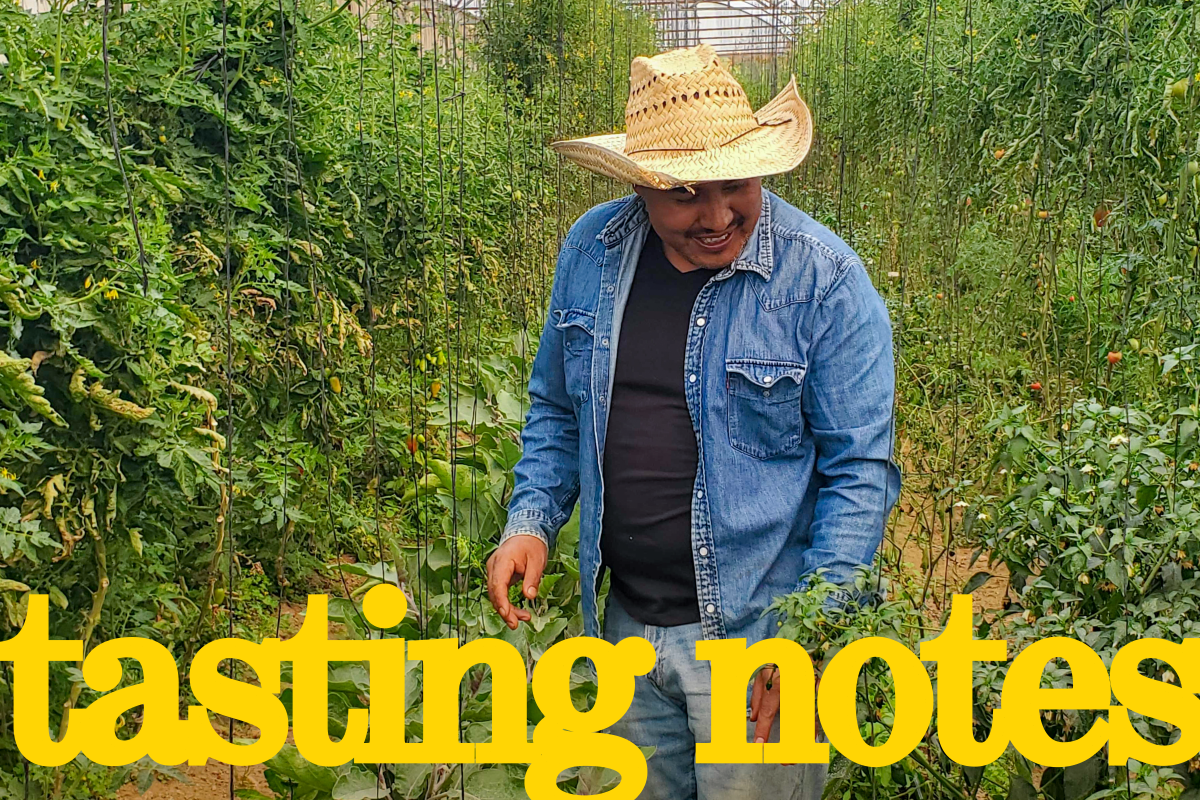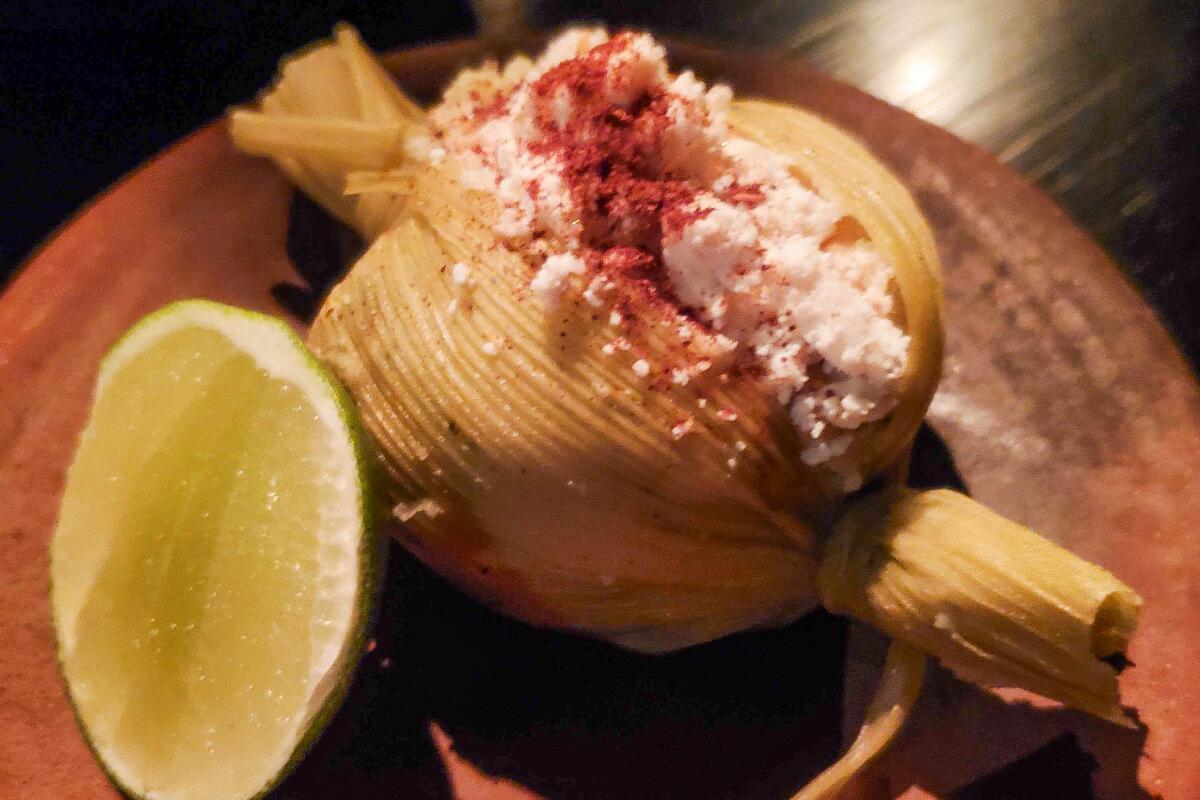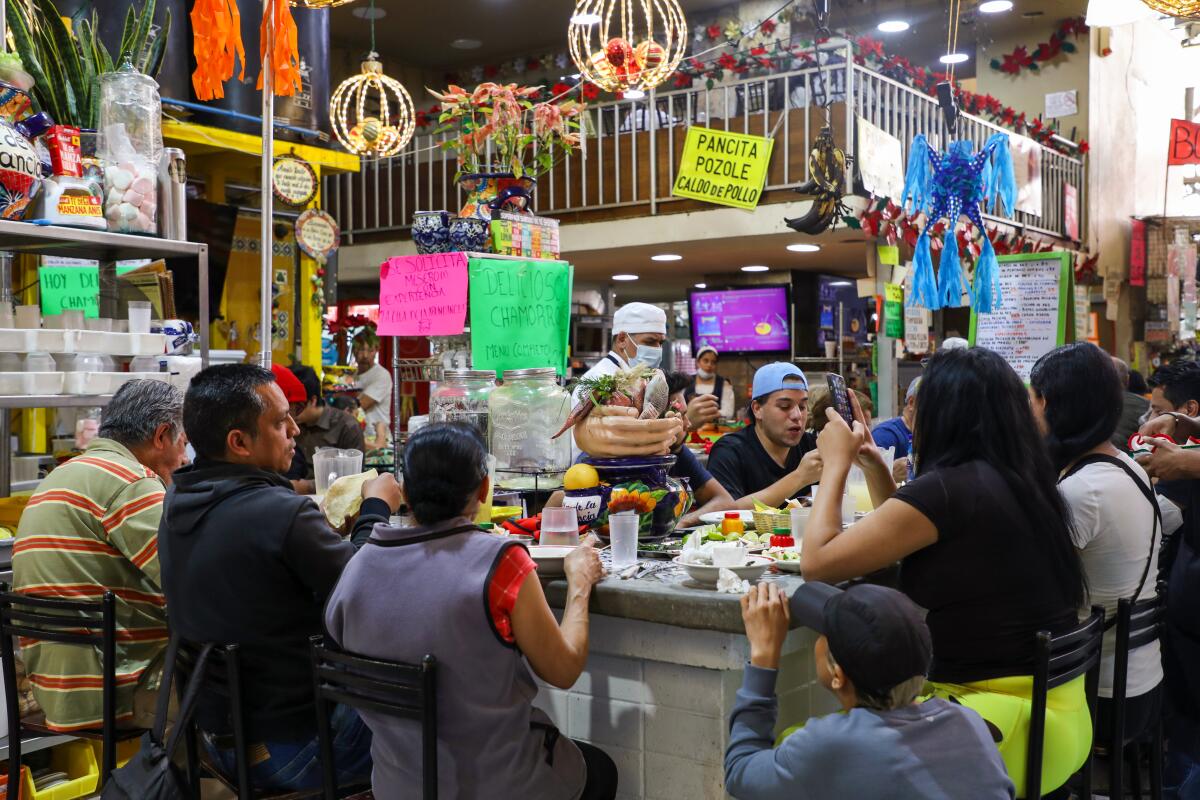From a modest farm to Mexico City’s fanciest restaurant

- Share via
Summer finally hit and Los Angeles is sweltering again under a blazing sun. But this week, our vibe, heart and bellies are fixated somewhere else: Mexico City, the frenzied capital of our neighbor to the south and, without a doubt, a food lover’s dream. I’m Daniel Hernandez, editor of L.A. Times Food, with this week’s Tasting Notes, with love for CDMX — or is it “D.F.”?
A farm that supplies its bounties to Pujol

If you dined at Pujol — the most heralded and admired restaurant in Mexico City, handily, by chef Enrique Olvera — around March, and if you had any dish featuring flor de calabaza or squash blossoms, I might have touched your food at the farm where it was grown.
Earlier this year, I was down in central Mexico again, visiting friends who live near the lake community of Valle de Bravo in the lush, green hills of the state of Mexico. Days earlier I had sat down for a meal that I’ll never forget, the taco omakase at Pujol’s bar, by chef de cuisine Jesús Durón, and was still reeling from it. So I asked folks behind the restaurant if any of the small supplier farms that feed Pujol’s kitchen were in the area, for a potential visit.
I was in luck. The following day, I tagged along with two Pujol administrators for a check-in visit with a generational farmer named Orlando Reyes, who has been working with Olvera’s restaurant group for years. We pulled into a pristine five-acre plot of land, set just over a hillside, in the community of Santa María Pipioltepec. Reyes gave us a tour of the land, Alcachofas Pipiol, which he’s farmed with his family his entire life. We walked along rows of vegetables, berries and fruit, all organically and sustainably grown, Reyes said — no chemicals and only “green manure” to encourage yields naturally and to replenish the soil.

Large-scale farming, Reyes told me, is fundamentally incompatible with sustainable agriculture.
“Many people say they produce organically. But, as long as I’ve searched, ‘organic’ only exists with diversity like we have here,” the farmer said, gesturing to alternating rows of different crops.
“I love to experiment. We set out to do everything with respect to nature,” he said. “The goal of this green manure is that the nutritional demands of a certain plant, like tomato, for example, overwhelms, by a lot, the nutritional reserves that exist in the ground. That’s where the disequilibrium happens.”
Over a row of yellow squash, we knelt and plucked a few that were blossoming with yellow and green flowers, like pods with a shock of hair. They looked delicious already, and I found myself imagining a diner having a pricey meal in the ritzy Polanco neighborhood back in the city, consuming this exact blossom, from this modest farm in the Mexican countryside, as surely someone would.
The existential challenges of climate change and drought facing agriculture globally are just as present here. Reyes is collecting rain water in an enormous, covered pool, for the ever drier dry season. He sends bounty like blueberries and tomatoes down to Pujol and Pujol sends goods back: ash from the ovens, which Reyes recycles by adding to planting soil, enriching it with boosts of calcium and potassium. The short hours we spent with the farmer were a visceral reminder that Olvera’s commitment has never wavered for native ingredients and sustainable sourcing. That day with Reyes, I learned that the core spirit behind elite dining temples like Pujol, at best, come literally from the ground up.
“My whole philosophy is, I guess, allowing simplicity to become complexity,” Reyes said.
Enjoying this newsletter? Consider subscribing to the Los Angeles Times
Your support helps us deliver the news that matters most. Become a subscriber.
All over Mexico City

Since pandemic restrictions eased, I’ve been visiting friends and old haunts in Mexico City more frequently. During one such trip, our general manager Laurie Ochoa — who, as my editor at LA Weekly 15 years ago, assigned me my first cover story on Mexico City back in 2006! — reached out and asked for my secret tip sheet of restaurants, things to do and things to avoid. The assumption that I even had a friends-and-family eating list for my former home was correct. And once she shared my doc with a relative of hers, they agreed: We should publish this.
The result is this week’s suite of stories, culminating with a list of 29 dining experiences I hold close to my heart in the Grand Tenochtitlan. The list’s strength is its specificity, I think — points on the map are largely concentrated in the old historic core known as the Centro Histórico, where I lived for years in an Art Deco building that is now facing a tourist-friendly flipping.
I delve into this tension over Mexico City’s rising global profile in a separate piece in which I recall the jarring new flavors that greeted me way back when I was a wee 21-year-old exploring downtown for the first time. In addition, I’m offering readers a back-pocket list of real-talk tips for visitors to Mexico’s capital.
The topic is dizzying and endless, and the L.A. Times overall considers coverage of Mexico a priority, and will continue to do so. If you’re hankering for more (and who isn’t?), continue to follow the work of the three Times foreign correspondents in the paper’s Mexico City bureau — Patrick J. McDonnell, Kate Linthicum and Leila Miller — and revisit this video by columnist Lucas Kwan Peterson on some delicious street eats in the old Distrito Federal.
Have a question?
Also ...
— In this week’s restaurant review, critic Bill Addison visits the surprising trove of mariscos at Loreto/Za Za Zá in Frogtown.
— It’s a great time of year to go out for oysters. And Eagle Rock is welcoming an enticing new option with Queen Street, reports Stephanie Breijo.
— Hospitality runs in the family for chef DeVonn Francis, whose Jamaican American background is inspiring others, with dinners reflective of Black Caribbean culture, writes deputy Food editor Betty Hallock.
— The next new pastry craze might be this golden square of dough with French-onion-soup-meets-pizza filling, reports Jenn Harris.
— For your weekend watch list: Chef Nancy Silverton visits the L.A. Times Test Kitchen to show us how she makes her twice-baked croissants.
Sign up for the Tasting Notes newsletter
Eat your way across L.A.
Get our weekly Tasting Notes newsletter for reviews, news and more.
You may occasionally receive promotional content from the Los Angeles Times.





